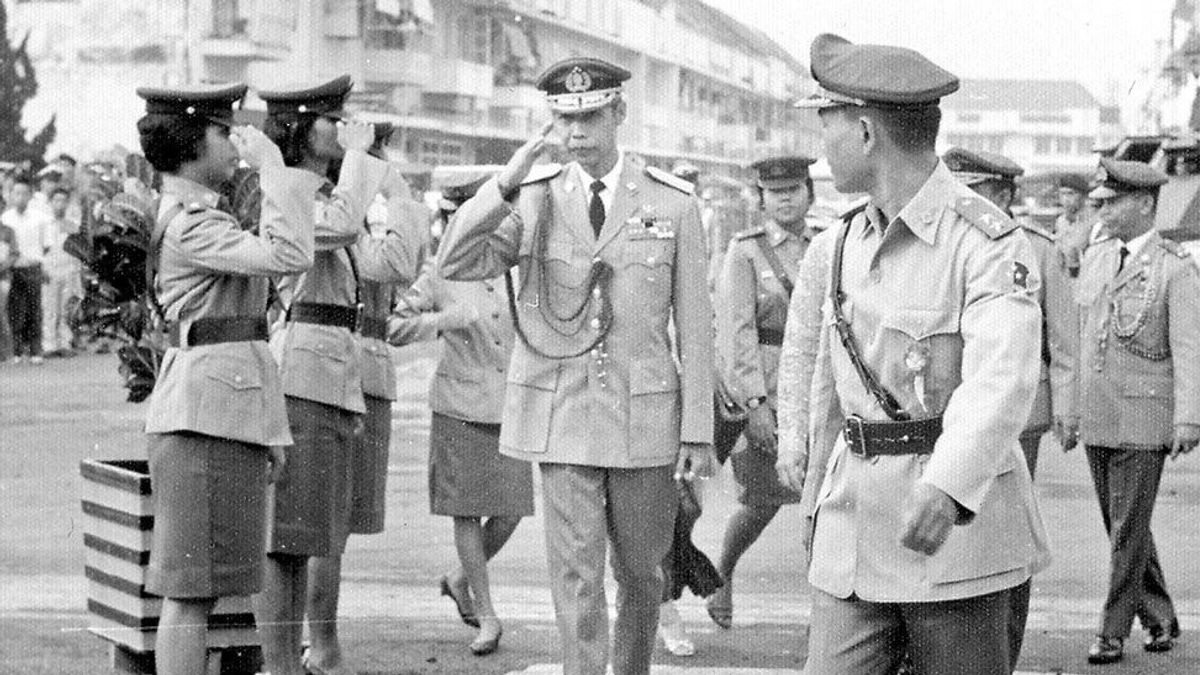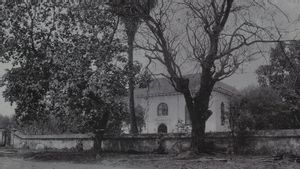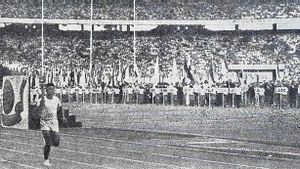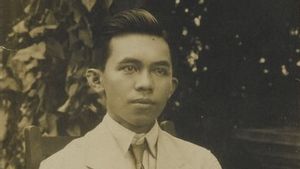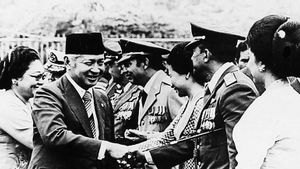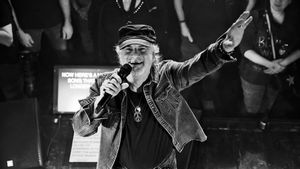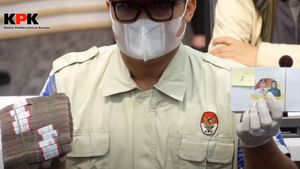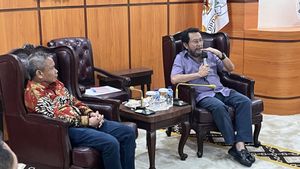JAKARTA - Hoegeng Imam Santoso is a person who is thirsty for knowledge. He who later became a police general was not only satisfied with his police education during the Japanese era, but instead chose to return to serve as a student at the Police Science College (PTIK) after Indonesia's independence.
He also had the opportunity to perpetuate his comparative studies in the United States (US). Hoegeng did not waste this opportunity. He learned many things. Mainly, regarding how the US Police investigate the perpetrators in a hit-and-run.
Regarding dreams, Hoegeng never had any doubts. He wants to have a career as someone who can help people. He also dreams of becoming a policeman. That dream was perpetuated because he saw the gallantry of a policeman upholding justice.
However, Hoegeng's path to becoming a police officer was not smooth. Because, he was actually studying at the Law College, Rechtshoogeschool Batavia (now: Jakarta). Hoegeng matured his knowledge related to law. He also participated in political discussions with freedom fighters.
Far from the fire. The Hoegeng school fell apart due to the arrival of the Japanese colonialists in 1942. They closed most of the universities in Batavia. This action made Hoegeng choose to return to his hometown in Pekalongan.

There, Hoegeng made his dream of becoming a policeman. He also attended police training held by the Japanese. Then, when Indonesia became independent, on the recommendation of the National Police Chief R.S. Soekanto, Hoegeng also studied at the Police Academy (later to become PTIK) in Mertoyudan, Magelang and moved to Jakarta.
He also gained a lot of new knowledge in PTIK. Matters related to intelligence assignments became his favorite subject. In fact, he often perpetuates intelligence efforts in carrying out his duties as a police officer in the future.
"When he moved to Jakarta, Hoegeng, with the rank of AKP (Adjunct Police Commissioner), carried out more of his duties as a regular police officer, such as being assisted in the traffic and public relations department at MABAK (now: Mabes Polri). Hoegeng's status as a student is temporarily suspended."
"Because PTIK has not yet held lectures due to lack of space. Hoegeng was the first batch of PTIK. By itself many were directly involved in the formation process, and its consolidation in the early years. Hoegeng also designed the PTIK symbol, because of his skill in painting," said Aris Santoso and friends in the book Hoegeng: A Cool Oasis in the Midst of the Corrupt Behavior of Nation's Leaders (2008).
Learn to Investigate Hit-Run in the US
Hoegeng Imam Santoso did not waste the opportunity to gain knowledge at PTIK. Perseverance sweet fruit. He became one of the PTIK students who had the opportunity to study abroad in the US. He visited various major cities in the US in 1950. From San Francisco to New York.
Hoegeng used this opportunity to learn more about the US Police. Starting from the organizational structure of the police, weapons, to police training. Learning opportunities present in every city explored.
The comparative study was able to add to Hoegeng's insight. Moreover, a comparative study to the US will be a useful provision when he goes into society in the future. Hoegeng's understanding of the importance of crime laboratories in each region increased.
The presence of a crime laboratory is considered capable of being a spearhead that can reveal many cases. Affairs case of hit and run, for example. Regarding this, Hoegeng paid serious attention. Because, he may as well have graduated from PTIK assigned to big cities in Indonesia.

Hit-and-run cases are unavoidable. Hoegeng also admitted that he was amazed by the modern crime laboratory in the US Police. US police only need tire tracks to be able to trace the perpetrators of hit-and-runs. This provision made Hoegeng prioritize the presence of a modern crime laboratory when he later served as Chief of the National Police.
“What also impressed me was how advanced the adult American Police laboratory was. crime research laboratories, for example, have complete and sophisticated equipment. By researching car tires alone, for example, it is possible to track down a perpetrator in a hit-and-run case.”
"In addition, the American Police have a broad scientific base and insight, thus educating them as good police, who highly value the values of independence and human rights in human and social life," said Hoegeng, as written by Abrar Yusra and Ramadhan K.H. in the book Hoegeng: Ideal Police and Reality (1993).
VOIR éGALEMENT:
The English, Chinese, Japanese, Arabic, and French versions are automatically generated by the AI. So there may still be inaccuracies in translating, please always see Indonesian as our main language. (system supported by DigitalSiber.id)
